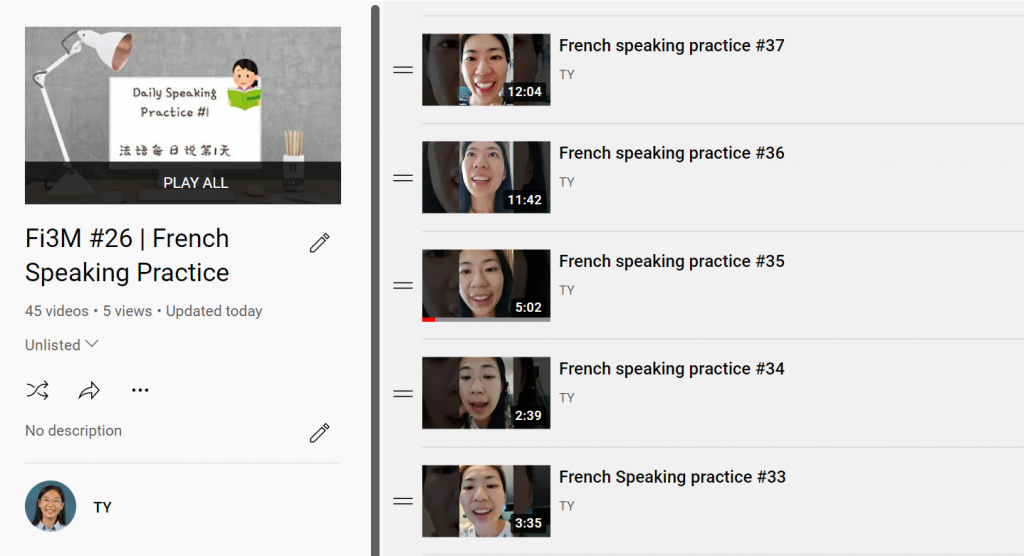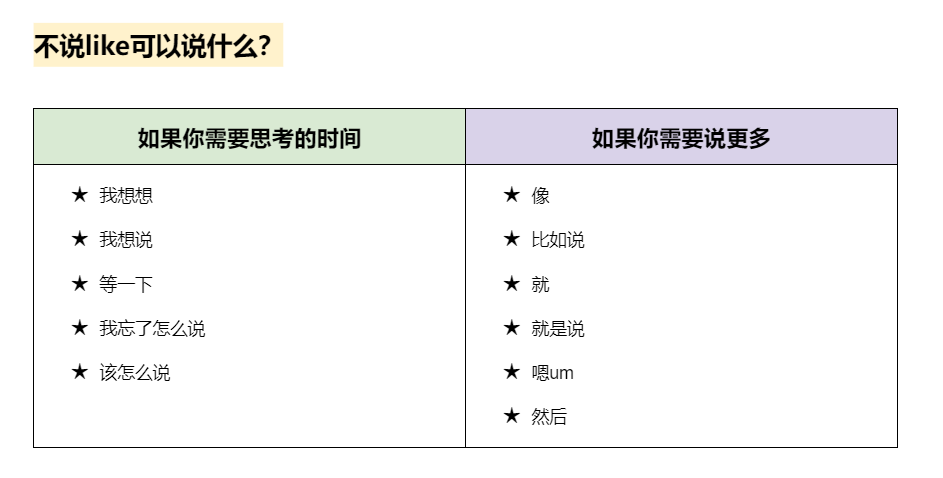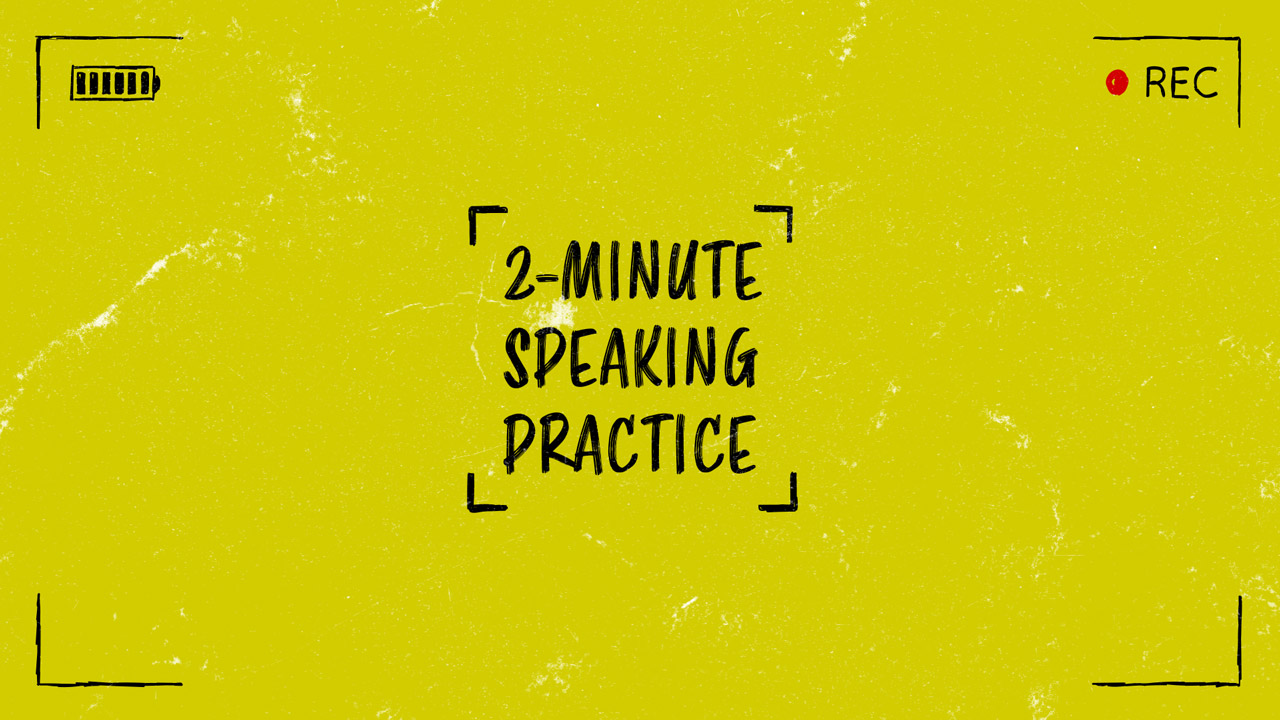The 2-Minute Speaking Practice: Recording Myself to Stop Saying “Like” All the Time
I am a Chinese teacher and a life-long language learner. I enjoy exploring various ways of acquiring a new language as an aid to know myself better, and then applying new techniques to facilitate my students’ learning.
I was so hesitant to kick off my French learning but the 2-minutes speaking practice of the Fluent in 3 Months Challenge came to my rescue. It’s a strategy that has effectively boosted my confidence.
Emily is my student. She enjoys challenging herself using the language whether it’s practicing pronouncing the character or correcting her grammar. To tackle Emily’s struggle with filler words and Chinglish, I’ve encouraged her to give the 2-minutes speaking practice a try.
We had fun practicing together as a teacher and a student, as well as friends to support and inspire each other.
This is our story.
Table of contents
Struggles
Emily: “I Was Trapped by Chinglish”
My parents sent me to a Chinese immersion school when I was just 2. When I first started learning Chinese, I felt so forced to do it, “Why couldn’t I just learn English?” It felt difficult, and I had no confidence in myself.
But after a few years, I got used to it and slowly began enjoying it and gaining more confidence in my ability to speak Chinese.
However, there were errors that I just kept repeating, and never knew how to correct them. I used Chinglish when I was having trouble with simple Chinese words because I felt dumb to not know easy expressions. Also, I just couldn’t stop saying the catchphrase “like”.
At the time, I felt hopeless, “I tried”, I would say, “Why can’t I just give up.” But to my realization, I just had to practice, and pay more attention to what I was saying.
TY: “French Can Be Impossible if You Don’t Know What You Possibly Want”
There were so many things about French that have long terrified me, such as listening and conjugations. I didn’t know which one to start with but I did know that the structured textbook-based courses didn’t seem engaging enough to me.
My confusion soon escalated to the fear and anxiety of “I can’t make any progress” till one day I figured out my two very motivations to learn French.
Firstly, I am so keen to communicate with my in-laws who could barely speak any English. Secondly, I simply enjoy exploring what works for me in terms of language learning.
Yes, that is it! I need to experiment with what is fast and intuitive to keep track of my progress. I want to practice speaking French.
That was when all the other fog cleared out.
Why Did We Start This 2-Minute Speaking Practice?
Shannon, the coach from the Fluent in 3 Months Challenge, encouraged every participant to start an extra oral practice besides the ultimate 15-minute conversation in our target language.
This is how we were advised to go about it:
- Choose a topic.
- Prepare for 1 minute.
- Turn on the camera.
- Record yourself speaking for 2 minutes.
- No pause, no redo.
It is a great strategy to simulate real-life conversations or speeches:
Quick Response
As you only have 1 minute to prepare, you are most likely improvising throughout the recording. You need to quickly react to a given topic, to organize your thoughts, to find proper words, etc….
When You Don’t Know a Word…
Yes, you can look up the words during the preparation stage but once you click the “record” button, you are on your own.
For language learners, it is just so natural to run out of words and recording forces us to describe the word with simple words that we know. Does it sound familiar to you?
It feels like when traveling to a foreign country, you need to use up every possible vocabulary, in addition to the dramatic body language to make yourself understood.
Learn to Get Out of Being Stuck and Feel More Confident
We need to turn on the camera, no pauses within these two minutes, and no redo.
That means we’ve had to see ourselves get stuck, face our blankness in the middle of a sentence, speak out of it, and eventually feel comfortable thinking and speaking at the same time.
In real life, there is no redo button after all.
Besides mimicking real-life conversation, recording gives us a chance to reflect on what we did well and what we could do better. It is an important chance to recognize our efforts and hard work, as well as our progress!

At the time of writing this post, I have recorded 45 practice videos and posted them on my YouTube channel.
How Did It Go?
Phase 1: Fun Yet Terrifying
Topics
If you are like me, kind of finished up with the pronunciation stage and have some basic idea of how to conjugate a regular verb into its present tense, trust me, this stage is going to be fun and terrifying.
I didn’t feel confident in talking about my day at this stage because there are so many things happening in one day. There are many emotions, decision-making moments, and descriptions to make. In other words, a lot of things are beyond my capacity, both vocabulary-wise and grammar-wise.
Therefore, the first fun part is that I spent two weeks talking about my favorite colors and animals, my hometown, and the countries that I have been to.
Basically, I chose the topics with a cluster of words that I was familiar with and that didn’t require using sophisticated grammar patterns or sentence structures.
Preparation
Sixty seconds tick away extremely fast. One day, I only managed to compose two sentences, and the other day my brain got stuck at how to conjugate “you are” (vous êtes).
In hindsight, what I enjoyed most is to take several deep breaths, then jot down several nouns or verbs that served as hints. If I got lucky, I was able to prepare the first line so perfectly that all my following pauses and “um” would seem clumsy in contrast.
Indeed, it was torture to even think about preparing for this practice.
Before quitting, I tried to explore why I felt uneasy, and what this concerning unmet need was. It turned out that I wanted to be certain about the exact sentences to articulate as opposed to a flickering word.
Also, I was afraid that I couldn’t make any progress compared to yesterday.
My trick to the latter concern is to create a starting line and an ending line, which was inspired by the script FI3M provided in the Mini Challenge #1.
In all my 45 videos, I started with “Coucou tout le monde, c’est ma …… vidéo.” (“Hello everyone, this is my ……video”).
At least I could tell I got really fluent with that line.
Takeaway
- It is okay to pause, to be blank, to roll up your eyes for 20 seconds, and it is totally fine to listen to yourself “um” most of the time! I realized that I “um” a lot when speaking both in Chinese (my mother tongue) and English. Also, it is simply so French to um and et.
- It is such an important phase to cultivate confidence. Before this practice, I would stop after finishing saying “Bonjour, je m’appelle TY et je suis Chinoise. J’habite en Chine” (“Hi, my name is TY and I am Chinese. I live in China.”)
a. There is definitely more that I could say but I didn’t feel fluent enough to verbalize anything else. However, I had no choice but to go beyond my catch phrases during this designated 2 minutes.
b. It is a magical feeling to see myself complete these 2 minutes. Even though I must have repeated “I like dogs” at least 10 times, I remember telling myself “probably I could do 5 more seconds tomorrow? Or I can try saying I don’t like snakes?”
- Recording myself 5 days in a row helps me build up a habit to do more. “Hey, you have already made a one-week streak, why not keep it up next week?”
I love this stage because I was somehow able to connect with my inner self via this practice. Becoming fluent didn’t seem my priority any more, instead, I captured some pure and heart warming happiness that made my days.
Phase 2: I Am ON FIRE
Moving to phase 2 was not at my will.
I simply ran out of daily topics and talking about my day didn’t seem stimulating. Mini Challenge #2 in our Fluent in 3 Months Challenge came right on time! During this mini challenge, I needed to collect as many building blocks as possible e.g. patterns, expressions, etc., and make sentences out of them.
Topic
I would paraphrase the French story that I listened to, and at the same time try to use the building blocks I noted from the story. Also, since my main focus was the French Conditional Tense, I encouraged myself to pay attention to it in the video.
Preparation
Having the story structure in mind helped get rid of my anxiety of not knowing what to say. Therefore, naturally, I used most of my prep time organizing the storyline. I went over the story and reviewed how to contextualize the building blocks.
Later, I iterated my strategy by grouping the story around the key building blocks so that ignoring part of the story would not get in the way of my goal of using those essential expressions.
Takeaways:
- Knowing what to say cleared out all the doubt of “What if I make so many mistakes that nobody understands me?”
As what I wanted to say gets more complicated, I must have made thousands of mistakes. Surprisingly, I was so occupied sorting out the next sentence that my brain didn’t have space to whine about my mistakes.
“Did I conjugate the past tense in the right way? Should I use “en” or “à”? Is it a feminine or a musculin word?” Those doubts came, but got rushed away in the snap of fingers, then another group of worries ebbed, then quickly flew away…
- Set up a goal and prioritize the relevance. One goal at a time. My goal was to hone my skill in the French conditional tense, then I tried not to blame myself for messing up the future tense or so. I celebrated it when I made a conditional sentence in an almost correct form!
Stage 3: Inviting Others to Join the Practice
When I started to feel bored and felt stuck at a bottleneck, I invited my student Emily to join me. Here is her story of practicing speaking Chinese:
“During the first week of my 4 week practice, I still repeated my habit of saying ‘like’ and using Chinglish. During the session, TY and I discussed the issue, and decided to record 2 minute videos in Chinese, talking about my day. One minute would be used to prepare, and the other would be used to speak.
The first time I recorded the video was surprisingly awkward, and ended up taking 10 minutes instead of 2. I noticed I said ‘like’ only once, and didn’t use any English at all, which made the video extremely long and choppy.
The second video was generally better. I used 4 minutes instead of ten, and had an easier time speaking compared to the first video. In the second video, I noticed I didn’t say ‘like’, or use any Chinglish which gave me a boost of confidence.
The third video was even better than the second one. I used a total of 2 minutes, and did not use ‘like’ or any Chinglish throughout the video. The last video was the same as the third video.
After recording all the videos, I felt like my fluency had improved immensely in a very short period of time. A strategy that helped me a lot was speaking slowly. While I was recording, I realized speaking slowly helped me focus on what I was saying, and prevented me from saying “‘ike’ or using Chinglish.”

(We made a list of connector words in Chinese.)
Some Tips For Those Who Would Love to Give It a Try:
Set a goal: how many times a week? How many weeks do you plan to do it? How many sentences do you want to speak? What’s your priority? etc…
Find a good time to record: It is definitely a will-consuming exercising and it is nothing as chill as binge watching tv. If you still find it hard and challenging, please don’t make it the last thing before sleep. You can do it right after your study when the vibe is still up!
Speaking slowly will help make sentences more fluent, and consistent.
Find a group/partner to share your daily progress
Don’t forget to recognize your sparks and celebrate your progress!
And if you want to read more about how to learn languages, here are a few recommendations



Social